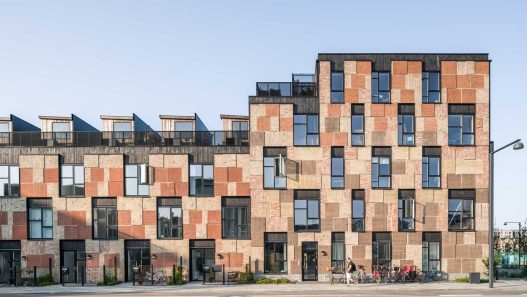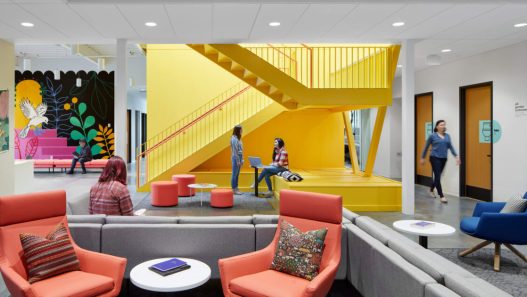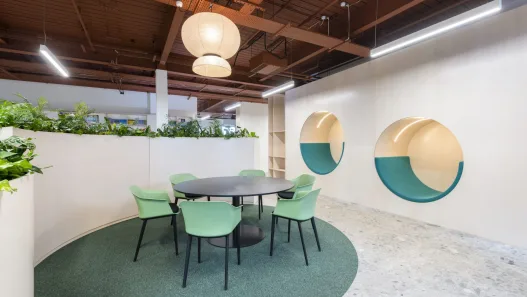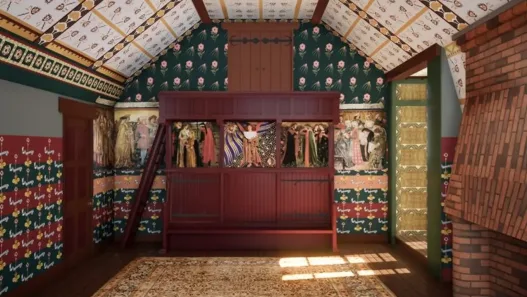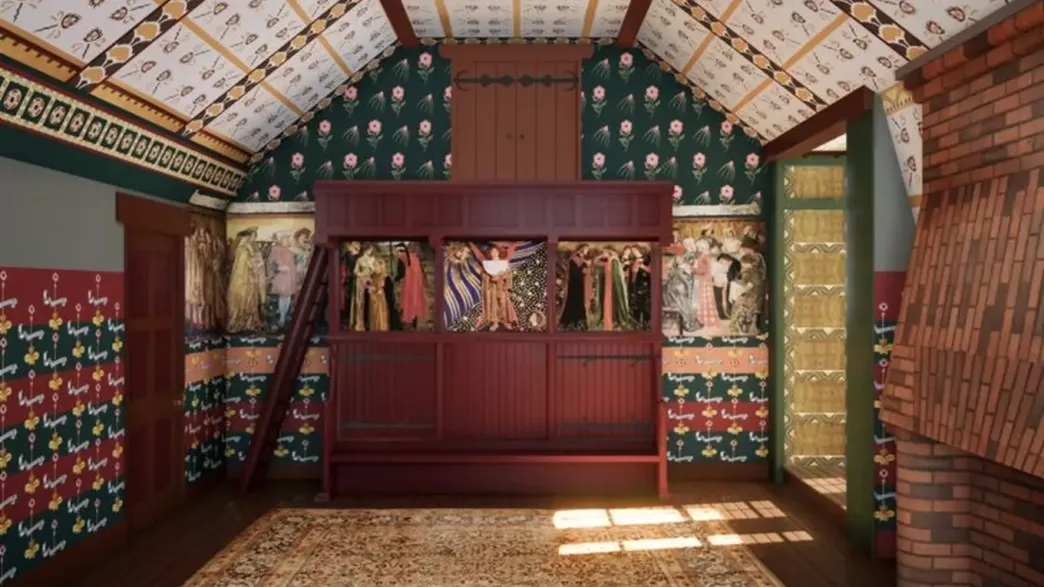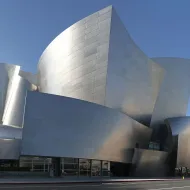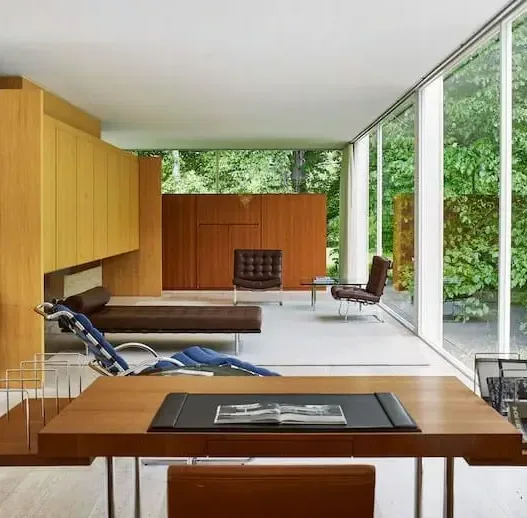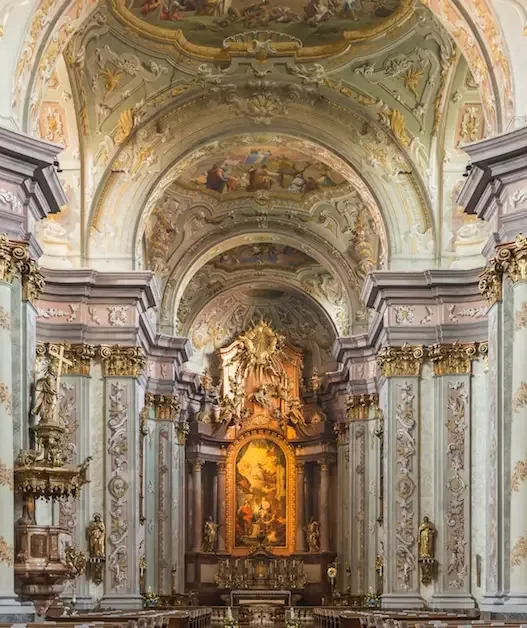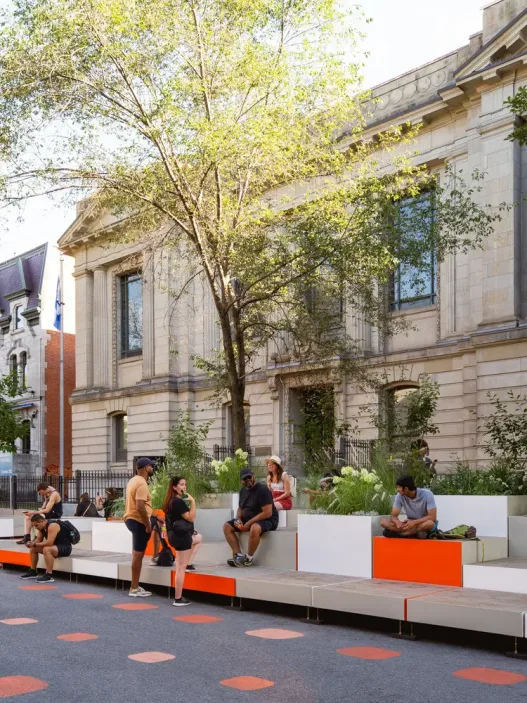Architecture is more than the physical structures we see; it serves as a lens through which we can understand and express cultural identity. As societies evolve, their architectural styles often reflect their values, beliefs and historical narratives. This interplay between culture and architecture is crucial as it not only shapes the environment but also informs our sense of belonging and identity. In a world increasingly affected by globalisation, revitalising traditional aesthetics while adapting to modern needs presents both challenges and opportunities for architects and societies alike.
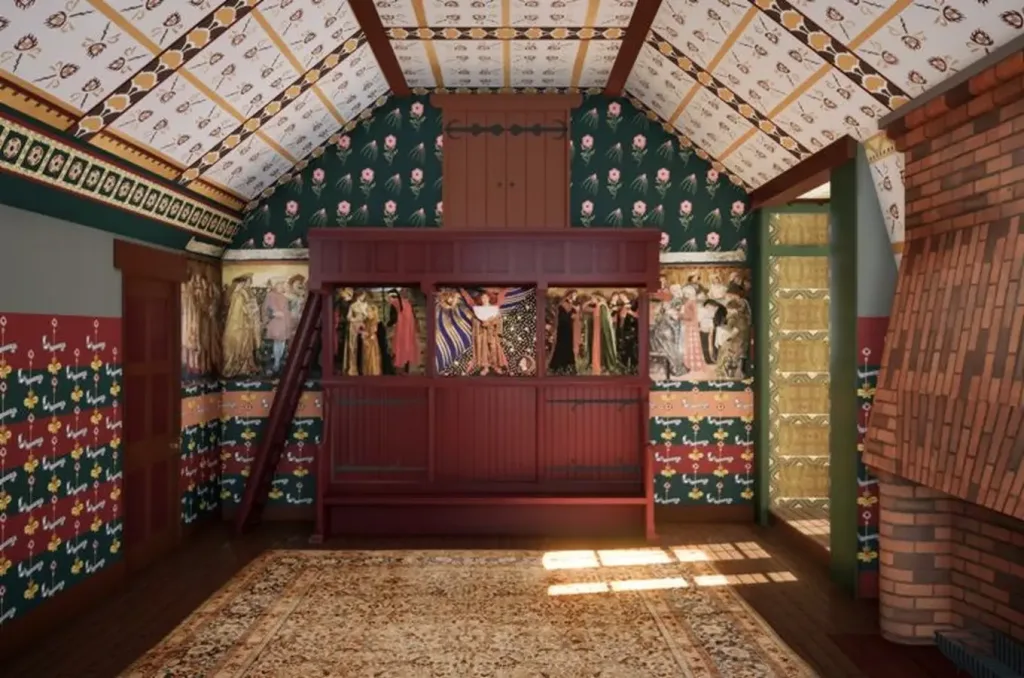
Definition of Cultural Identity
Cultural identity refers to the shared characteristics, values and practices that define a group of people. It includes language, religion, traditions and even the environment in which a community lives. In architecture, cultural identity manifests itself through design elements, materials and spatial organisation that resonate with the historical context and social fabric of a community. This identity is dynamic, developing over time as societies change and adapt, but deeply rooted in the past, providing a sense of continuity and belonging.
The Importance of Architecture in Cultural Expression
Architecture plays an important role in cultural expression by providing physical spaces where communities can gather, celebrate and practice their traditions. It serves as a canvas on which a people’s collective identity is painted, embodying their stories, aspirations and struggles. From the intricate carvings of traditional temples to the minimalist designs of contemporary community centres, architecture communicates values and beliefs. It can inspire pride and devotion, fostering a sense of identity that resonates across generations.
Architecture also acts as a backdrop for cultural rituals and everyday life, shaping experiences and interactions. When societies embrace their architectural heritage, they not only preserve their history, but also enhance their contemporary relationships by creating spaces that promote social cohesion and cultural continuity.
Historical Context of Traditional Aesthetics
Traditional aesthetics in architecture are often rooted in the historical and environmental contexts of a region. For example, the use of local materials and climatic considerations have shaped the vernacular architecture of many cultures. In India, the intricate jali screens of Mughal architecture not only served aesthetic purposes but also provided ventilation in hot climates. Similarly, adobe structures in the American Southwest reflect both the resources available and the indigenous cultures that inhabited these regions.
Throughout history, architectural styles have been influenced by a variety of factors including colonialism, industrialisation and migration. These influences have often led to the fusion of different styles, creating hybrid forms that reflect the complexity of cultural identity. Understanding this historical context is essential for contemporary architects seeking to revitalise traditional aesthetics so that they can honour the past while responding to the needs of the present.
Modern Interpretations of Cultural Identity
In today’s globalised world, modern interpretations of cultural identity in architecture often seek to balance tradition with innovation. Architects increasingly refer to traditional forms and materials and reinterpret them in contemporary designs that resonate with new generations. This approach not only honours cultural heritage, but also addresses modern challenges such as sustainability and urbanisation.
For example, in cities such as Kyoto, Japan, strict regulations allow for modern functionality while preserving traditional aesthetics. Architects create buildings that fit seamlessly into the historical context, using materials such as wood and stone that reflect local craftsmanship. In doing so, they create spaces that are both functional and culturally meaningful, establishing a dialogue between the past and the present.
Another example can be seen in the work of contemporary architects in Africa who are inspired by local building techniques and materials. By incorporating traditional designs into modern architecture, they are creating buildings that speak to their cultural identity and at the same time fulfil contemporary needs such as energy efficiency and social resilience.
Cultural Identity in Architecture Case Studies
There are many interesting case studies that emphasise the revival of traditional aesthetics in modern architecture. Designed by David Adjaye, the museum features a façade inspired by the intricate metalwork of West African art, symbolising durability and cultural heritage. This architectural choice not only connects visitors to African-American history, but also serves as a testament to the ongoing influence of cultural identity in design.
Another striking example is the restoration of the historic town of Sidi Bou Said in Tunisia, where traditional blue-and-white architecture has been preserved and revitalised. This initiative not only attracts tourists, but also creates a sense of pride among the local population, reinforcing their cultural identity through architecture.
These case studies show how architects can effectively weave cultural identity into modern designs and create spaces that reflect both heritage and contemporary aspirations. By bridging past and present, architecture can play an important role in shaping a future that honours cultural diversity and fosters a sense of belonging.
Ultimately, the relationship between architecture and cultural identity is a rich and evolving narrative. By revitalising traditional aesthetics for modern use, architects can create spaces that not only meet contemporary needs, but also celebrate and honour the diverse cultural landscapes from which they emerged. This approach fosters a deeper understanding and appreciation of the values that shape our built environment and ultimately our shared human experience.
Architecture is not just about constructing buildings; it is a profound expression of cultural identity. As societies evolve, the need to reconnect with traditional aesthetics while embracing modern functionality becomes increasingly important. This research examines how traditional architectural elements can be revitalised and integrated into contemporary design, promoting a sense of belonging and cultural continuity.
Key Elements of Traditional Aesthetics
Traditional aesthetics encompasses a multitude of features that reflect the history, values and environmental context of a culture. These elements are not only visually striking, but also full of meaning. They act as a bridge connecting past and present, allowing modern architects to draw inspiration while honouring cultural heritage. Revitalising these elements can create spaces that resonate with both nostalgia and innovation, and offer a unique architectural language that speaks to our collective identity.
Materials Used in Traditional Architecture
The materials chosen for traditional architecture often tell a story of the local environment and available resources. For example, in areas where timber is abundant, wooden structures dominate and showcase craftsmanship honed over generations. In contrast, monumental buildings that have stood the test of time can be found in regions rich in stone. The use of clay and adobe in arid climates not only reflects resourcefulness, but also a deep understanding of the local climate, providing natural insulation.
In modern practice, architects are increasingly returning to these materials, recognising their sustainability and aesthetic qualities. By incorporating local materials into new designs, architects can create buildings that harmonise with their surroundings and promote a sense of place. This approach not only honours traditional practices, but also reduces the environmental footprint associated with transporting materials over long distances.
Architectural Styles and Origins
Every architectural style carries with it a narrative of cultural evolution. The intricate carvings of Gothic cathedrals, the simplicity of Japanese Zen buildings or the vibrant colours of Mediterranean houses reflect the values and lifestyles of their respective societies. Understanding the origins of these styles provides insight into how they can inform modern design.
For example, the minimalist approach of Scandinavian architecture, which emphasises functionality and simplicity, can inspire contemporary designs that prioritise sustainability and efficiency. By analysing these traditional styles, architects can adopt principles that coincide with current societal needs while respecting their roots. This blending of styles can lead to innovative designs that are both functional and aesthetically pleasing.
Symbolism in Traditional Design
Symbolism plays a very important role in traditional architecture and many elements are designed to express deeper meanings. For example, the spiral motifs found in Celtic designs often symbolise growth and evolution, while the use of specific animal motifs may reflect cultural beliefs or local mythology. These symbols create a link between the inhabitants and their cultural narratives.
In modern architecture, integrating symbolic elements can enhance the emotional resonance of a building. Whether through the use of motifs that reflect local folklore or the incorporation of shapes that represent community values, architects can create spaces that foster a sense of identity. This approach not only enhances aesthetic appeal, but also deepens the relationship between space and its users, making architecture a living expression of culture.
Colour Palettes and Their Importance
Colour is a powerful tool in architecture, often evoking emotions and reflecting cultural identity. In traditional settings, certain colours can be associated with festivals, rituals or the natural environment, creating a vibrant tapestry that enriches the surroundings. For example, the earthy tones of adobe houses in New Mexico contrast beautifully with the blue sky, creating a harmonious visual experience.
Modern architects can draw inspiration from these traditional colour palettes to evoke certain emotions or create a sense of place. By choosing colours that coincide with the local landscape or cultural significance, designers can create buildings that feel integrated with their surroundings. This not only enhances aesthetic appeal, but also reinforces the cultural narrative embodied by the architecture.
Integration with the Natural Landscape
The relationship between architecture and the natural landscape is often rooted in traditional practices. Many cultures have historically designed their buildings to blend seamlessly with the environment, whether by orienting buildings to maximise natural light or using local topography to influence design. This integration reflects a deep respect for nature and an understanding of how the built environment can coexist with the natural world.
In contemporary architecture, this principle is gaining renewed attention as sustainability becomes a priority. By designing buildings that respond to their surroundings, utilising natural ventilation, passive solar heating and green roofs, architects can create spaces that are not only aesthetically pleasing but also environmentally sensitive. This harmonious relationship fosters a sense of stewardship for the land and ensures that as we move forward we do so with respect for the past and consideration for the future.
As a result, revitalising traditional aesthetics in modern architecture offers a rich tapestry of opportunities to explore cultural identity. By embracing key elements such as materials, style, symbolism, colour and landscape integration, architects can create spaces that are not only functional but also resonate deeply with the cultural narratives that shape our lives. Through this exploration, we can build a future that honours our past while innovating for a sustainable tomorrow.
Architecture is more than the buildings we live in; it encompasses our cultural identity, history and values. In an increasingly globalised world, the challenge of harmonising traditional aesthetics with modern needs is evident. This exploration reveals how contemporary architecture can revitalise and celebrate cultural heritage while meeting the demands of modern life.
Modern Architectural Movements Embracing Tradition
In recent years, architectural movements have emerged that seek to bridge the gap between modernity and tradition. These movements emphasise the importance of local culture and history, advocating designs that reflect the unique identities of their communities. As urban centres grow and develop, architects are returning to traditional forms, materials and techniques, creating spaces that resonate with the past while serving contemporary purposes.
The blending of old and new is not just a stylistic choice; it signals a deeper sense of place and identity. Today’s architects recognise that buildings can tell stories, evoke memories and encourage a sense of belonging. By incorporating traditional elements into modern designs, they create environments that honour the past while providing functionality and comfort for present and future generations.
Defining Modernism and Traditionalism
Modernism in architecture is often characterised by minimalism, functionality and the use of new materials such as steel and glass. It emerged in the early 20th century as a reaction to the ornate styles of the past, emphasising simplicity and innovation. Traditionalism, on the other hand, is inspired by historical architectural styles, focusing on craftsmanship, local materials and cultural narratives.
While modernism seeks to break free from historical constraints, traditionalism seeks to preserve and celebrate them. However, these two approaches are not mutually exclusive. Many architects today are finding innovative ways to combine the principles of modernism with traditional aesthetics, creating hybrid designs that embrace the future while respecting the past. This synthesis allows for the creation of spaces that are not only visually appealing, but also deeply rooted in cultural identity.
Revivalist Architecture: Trends and Examples
As societies seek to redefine their identities in the face of globalisation, revivalist architecture is gaining traction. This trend often manifests itself in the reinterpretation of traditional styles, where architects take familiar forms and adapt them to contemporary needs. For example, in many regions you can find buildings that reflect historic designs but incorporate modern materials and sustainable practices.
One prominent example is the use of courtyard designs that have been common in various cultures for centuries. Architects are redesigning these spaces, integrating them into tall buildings that encourage community interaction while providing natural ventilation and light. Furthermore, the revitalisation of local building techniques, such as adobe construction in desert regions or timber framing in forested areas, illustrates how traditional knowledge can inform modern architecture.
Sustainable Practices in Traditional Design
Sustainability is a very important aspect of modern architecture, and traditional designs often contain valuable lessons in this regard. Many vernacular building practices have evolved over centuries using local materials and techniques that are inherently energy efficient and environmentally friendly. For example, vernacular architecture often incorporates passive cooling methods such as thick walls and strategically placed windows to maintain comfortable indoor temperatures without the need for mechanical systems.
Architects are increasingly resorting to these time-tested methods when designing for sustainability. By adopting local materials and respecting the natural environment, they are creating buildings that not only minimise their ecological footprint, but also resonate with the cultural identity of the community. This approach fosters a sense of pride and ownership among residents who see their heritage reflected in the places where they live.
Architects Leading the Movement
Some architects are at the forefront of this movement, advocating the integration of traditional aesthetics into modern design. Names such as David Adjaye and Kengo Kuma have become recognised for their ability to weave cultural narratives into their projects. For example, Adjaye’s work often reflects the histories and stories of the communities it serves, while Kuma emphasises the relationship between buildings and their natural surroundings.
These architects don’t just design buildings; they create cultural landmarks that resonate with local identity. Their projects serve as a testament to the power of architecture in shaping how we perceive our heritage and environment. By collaborating with local artisans and communities, they ensure that their designs are not only innovative but also grounded in the realities of where they live.
Community Participation in Design Processes
Involving the community in the design process is vital to ensure that architecture reflects the cultural identity of its inhabitants. Architects increasingly recognise the importance of collaboration by involving local residents in discussions about their needs, preferences and aspirations. This participatory approach not only improves the appropriateness of the design, but also fosters a sense of belonging and pride among community members.
Workshops, public forums and collaborative design sessions are becoming common practices, allowing architects to gather insights and feedback directly from those who will inhabit the spaces. By valuing local knowledge and experience, architects can create environments that deeply resonate with the community’s identity and ensure that architecture is not just a building but a living reflection of the people.
Consequently, the revival of traditional aesthetics in modern architecture is a powerful tool for honouring cultural identity. By embracing the lessons of the past while innovating for the future, architects can create spaces that are both functional and meaningful. This ongoing dialogue between tradition and modernity is essential to encourage a deeper connection between people and their built environment, paving the way for a more harmonious and culturally rich future.
Architecture is not just about constructing buildings; it embodies the history, values and identity of a culture. As societies evolve, there is a growing desire to reconnect with traditional aesthetics and blend them with modern functionality. This revival not only honours the past, but also enriches contemporary life by offering a sense of belonging and continuity. Exploring how traditional design elements can be integrated into modern architecture reveals a rich tapestry of cultural identity that is both relevant and inspiring.
Examples of Successful Revitalisation
Analysing case studies of architectural projects that have successfully revitalised traditional aesthetics provides insight into how these designs can coexist with modern needs. The restoration of the historic city of Bhuj in India following the devastating earthquake of 2001 is a notable example. By combining local materials and traditional construction techniques, the architects created structures that reflect the heritage of the region while meeting modern safety standards. This project not only restored the buildings, but revitalised the community’s spirit and pride in their cultural identity.
The Al Bahar Towers in Abu Dhabi are another example, blending traditional Islamic architectural elements with modern technology. The exterior features a mashrabiya, a design that allows natural ventilation while providing shade and privacy. This project emphasises how traditional aesthetics can enhance sustainability in contemporary architecture, proving that old and new can coexist harmoniously.
Impact on Local Communities
The revitalisation of traditional architectural aesthetics often has profound effects on local communities. When buildings reflect a community’s cultural heritage, it fosters a sense of pride and ownership among residents. For example, in the town of Kizhi in Russia, traditional wooden architecture has been preserved and celebrated through eco-tourism. This not only attracts visitors, but also stimulates the local economy, provides employment and encourages artisans to continue their craft.
Moreover, these architectural revitalisations can become gathering spaces that encourage social interaction and community engagement. In many cities, restored historic buildings serve as cultural centres, museums or public spaces that bring people together. This revitalisation of community spaces strengthens social bonds by encouraging residents to connect with their heritage and with each other.
Challenges Faced During Revitalisations
While the revival of traditional aesthetics is inspiring, it is not without its challenges. One major obstacle is the tension between preserving authenticity and meeting modern needs. Architects often grapple with how to integrate contemporary amenities without compromising the historic integrity of a building. For example, retrofitting older structures with energy-efficient systems can be complex and requires innovative solutions that respect the original design.
Resistance can also come from communities with different visions for their development. Some may prioritise modernisation over conservation, seeing traditional aesthetics as outdated. Navigating these different perspectives requires open dialogue and collaboration between stakeholders and ensures that the revitalisation process is inclusive and takes into account all voices.
Lessons learnt from the Case Studies
Several key lessons emerge from the successes and challenges of the various projects. First, community participation is essential. Involving local residents in the design process fosters a sense of ownership and ensures that the revitalised buildings match their needs and aspirations. Architects should listen to the stories and desires of the community to create spaces that truly reflect their identity.
Secondly, flexibility is crucial. Successful projects often find a balance between preserving traditional elements and adapting to modern requirements. This adaptability can lead to innovative solutions that honour the past while embracing the future, creating spaces that are both functionally and culturally significant.
Finally, interdisciplinary collaboration enriches the revitalisation process. Architects, historians, artisans and community leaders can work together to create designs that honour tradition while addressing contemporary challenges. This co-operation not only enhances the quality of the project, but also fosters a deeper appreciation for the cultural heritage being preserved.
Future Prospects for Traditional Aesthetics
Looking ahead, the future of traditional aesthetics in architecture looks promising. As global awareness of cultural identity grows, more architects and designers are prioritising the integration of traditional elements in their work. This trend could lead to a revival of interest in local materials and construction techniques, promoting sustainability and reducing the environmental impact of construction.
Moreover, the rise of digital technology offers exciting opportunities for the discovery and preservation of architectural heritage. Virtual reality and augmented reality can create immersive experiences that allow individuals to interact with their cultural heritage in new ways. These technologies can also help document and preserve traditional techniques, enabling future generations to appreciate and learn from them.
In conclusion, the revival of traditional aesthetics in architecture is not just a trend; it is a powerful movement that honours cultural identity while responding to contemporary needs. By studying successful case studies, understanding societal influences and learning from challenges, we can pave the way for a future where architecture continues to be a living expression of cultural heritage.
Architecture is more than the design of buildings; it is a reflection of cultural identity, history and social values. As cities develop and modernise, there is a growing movement to revitalise traditional aesthetics in contemporary architecture. This approach not only honours the past, but also enriches the present, creating places of cultural significance. In this research, we examine how technology plays an important role in this revival and how it enables architects to seamlessly blend tradition and innovation.
The Role of Technology in the Revitalisation of Tradition
Technology has transformed many aspects of our lives and architecture is no exception. As we seek to incorporate traditional elements into modern designs, technology provides the tools needed to analyse, replicate and innovate. This integration of technology enables architects to create structures that honour cultural heritage while also meeting the demands of contemporary life. By embracing both the old and the new, architects can promote a sense of identity and place in an increasingly globalised world.
Digital Tools for Design and Conservation
Digital tools have revolutionised the way architects approach design and conservation. Computer-aided design (CAD) and building information modelling (BIM) software allow precise planning and visualisation of structures. These tools simulate traditional aesthetics, allowing architects to experiment with forms, materials and colours before construction begins. Furthermore, digital archiving techniques help preserve historic buildings, documenting their details for future generations. Using these technologies, architects can create designs that reflect traditional styles while ensuring that they are feasible and sustainable.
3D Printing and Applications
3D printing represents a groundbreaking advance in the field of construction, allowing the creation of complex forms and intricate details that traditional methods may struggle to achieve. This technology can be particularly useful when revitalising traditional architectural elements, such as ornate carvings or specific structural features unique to a culture. For example, in regions where traditional craftsmanship is declining, 3D printing can accurately reproduce these elements and preserve cultural identity in a modern context. Moreover, it reduces waste and can speed up the construction process, making it an environmentally friendly alternative for modern architecture.
Virtual Reality and Heritage Experiences
Virtual reality (VR) is an innovative tool that offers immersive experiences that allow users to explore historical sites and architectural wonders as if they were physically there. This technology can play a crucial role in education and cultural preservation. Virtual reality promotes a deeper understanding of architectural significance by enabling people to experience and appreciate their cultural heritage by creating virtual replicas of traditional structures. For example, students and tourists can walk through ancient temples or historic neighbourhoods, experiencing the atmosphere and aesthetics of these places without the constraints of physical travel.
Smart Materials and their Cultural Significance
Smart materials are another exciting way to bridge the gap between traditional aesthetics and modern functionality in architecture. These materials can improve energy efficiency and comfort in buildings by responding to environmental changes. Examples include self-healing concrete and temperature-sensitive glass. When integrated into designs that reflect traditional styles, smart materials can make these buildings not only look beautiful, but also perform exceptionally well in a modern context. This combination of aesthetics and functionality serves to strengthen cultural identity while responding to contemporary needs.
Balancing Tradition and Innovation
The challenge of balancing tradition and innovation is at the heart of modern architectural practice. Architects must consider the realities of today’s society, including sustainability, functionality and technological advances, while striving to honour cultural identities. Successful projects often arise from a dialogue between past and present, where traditional designs are reinterpreted through modern lenses. This balance allows architects to create spaces that have cultural significance and at the same time are practical and relevant for current and future users.
In conclusion, the revival of traditional aesthetics in modern architecture is a dynamic process enriched by technology. Digital tools, 3D printing, virtual reality and smart materials are contributing to a richer understanding and appreciation of cultural identity. By finding a harmony between tradition and innovation, architects can design spaces that not only honour the past but also inspire the future, creating meaningful and enduring environments.
Conclusion: The Future of Architectural Identity
Standing at the intersection of tradition and modernity, the future of architectural identity calls us to reflect on the essence of our cultural narratives. Architecture is more than just a building; it is a reflection of our values, stories and identities. By interweaving our historical aesthetics with contemporary design, we can create spaces that not only serve functional needs but also evoke a sense of belonging and continuity.
Reflecting on Cultural Narratives
Our built environment encapsulates the stories of our ancestors, the struggles and triumphs that have shaped our societies. Whether it is the graceful curves of Moorish architecture or the solid lines of Brutalism, each architectural style tells a story. These narratives resonate deeply, connecting us to our heritage and fostering a shared identity. When designing for the future, embracing these narratives means recognising their relevance in today’s globalised world. By allowing cultural stories to shape our buildings, we create places that honour the past while speaking to future generations.
The Importance of Conservation
Conservation is crucial to maintain the essence of architectural identity. It is not just about saving old buildings; it is about recognising the values they represent. Timeless structures often incorporate unique techniques and materials that reflect the local environment and culture. For example, the use of local stone in traditional Italian villas not only showcases craftsmanship, but also connects the building to its geographical context. As we modernise, integrating these traditional elements into new designs can promote sustainability and respect for our cultural landscape, ensuring that future generations inherit a rich tapestry of architectural heritage.
Encouraging Future Generations
It is vital to inspire future architects and designers to appreciate and engage with their cultural roots. Educational programmes that emphasise the importance of traditional aesthetics can foster a new wave of creativity that honours historical influences while innovating for the future. Workshops that involve community members in the design process can also foster a sense of ownership and pride in local architecture. By encouraging young minds to explore their cultural identity through architecture, we pave the way for a more diverse and inclusive field that reflects the myriad cultural stories of our world.
Global Perspectives on Architectural Identity
Architecture is a universal language, but it speaks differently across cultures. In places like Japan, where the interaction between nature and built structures is paramount, traditional practices such as tatami mat settlement and shoji curtains offer insights into a harmonious lifestyle. In contrast, the vibrant colours and intricate patterns of Indian architecture reflect a rich history of art and spirituality. By exploring these global perspectives, architects can draw inspiration that transcends geographical boundaries, fostering a dialogue that respects local identities while developing a global consciousness in design.
Call to Action for Architects and Societies
It is crucial that architects and communities collaborate to preserve and revitalise cultural identity through architecture. Architects are not just builders; they are storytellers who can weave narratives into every building. Communities should actively participate in these dialogues, sharing their histories and aspirations. Together they can create spaces that resonate with the spirit of their surroundings. This call to action is not just about building buildings; it is about fostering environments that foster identity, creativity and connection. By embracing our architectural heritage, we are laying the foundation for a future where our built environment is a true reflection of who we are.
As a result, the journey of architectural identity continues and we have the opportunity to create a future that honours our past while inspiring future generations, while revitalising traditional aesthetics for modern use.



